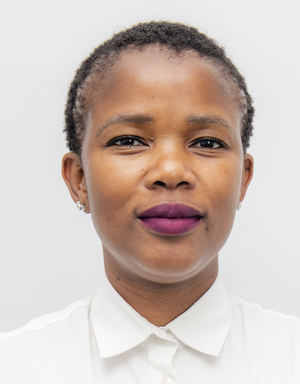On-air competitions have long been a feature of radio content. But what is the return on investment for stations and advertisers, and is it worth it?
Western Cape regional radio station Smile 90.4 FM recently launched a competition with an eye-watering R2 million prize for one listener. Billed as Africa’s biggest on-air giveaway, the station said it was an effort to build listenership, as well live by its brand positioning, which is to keep South Africans in good spirits.
For Smile, the “two million reasons to smile” campaign’s return on investment was an increased listenership, and opening the competition up countrywide via listening on its app was the means by which to bring new ears to the station’s offering.
Of course, attracting new listeners is a vital part of competitions, but keeping them once the competition is over is the trick.

“When stations develop their own competitions it would be to either drive an increase in cumulative (cume) audience or extend time spent listening. Audience growth may spike slightly after a competition, but the trick is to have all the elements on the station in place before running great competitions.” says programming manager of East Coast Radio (ECR), Zane Derbyshire.
“If the music, presenters and content are compelling, the increase driven by the competition is likely to stick a lot more. Because the Broadcast Research Council’s Radio Audience Measurement (BRC RAM) survey releases are rolled waves, it is hard to determine if one single competition had a true impact on audience numbers, as most competitions do not run for six months at a time.”
ROI for brands
ECR’s head of promotions, Jonathan Lumley, agrees. “It’s been hard to track in recent years with the change to BRC RAMS, and not having any longitudinal data to refer back to has been frustrating. Before, we could compare listenership around a period of time that a major promotion was running and see the impact on cume and time spent listening,” he says.
“Often we could see a marked increase in numbers, or not, if nothing had been done, but a competitor had. So we usually gauge engagement with our entry numbers now, and have benchmarks around the type of competition that was running, and based on the mechanic, and entry point we can pretty much work out how many entries a client should be expecting. And by using those unique numbers and comparing the entries to our databases we can determine whether it’s made an impact on listenership.”

The return on investment for brands is a different matter, and depends on the client’s objectives. Minenhle Dlamini, head of creative and promotions at Gagasi FM, says some want to drive leads or traffic to a website or a place, while others want to push sales or grow brand awareness. “You would then measure the ROI based on whether the objective has been met or not. The competition mechanics need to speak to the client’s objective,” she adds.
That’s why it is crucial to analyse and question the purpose of the competition from the client upfront and then deliver on that brief, says Lumley. “We could run a competition that generates thousands of entries, but few opt-ins for the client, and consequently fail on their expectations. Generally we measure by looking at the total number of entries, then measure against the unique entries and any further op-ins for the client.
Social media a powerful element
“If it’s the radio station’s own competition (not sponsored) we are more inclined to really measure total entries and how much PR value we got from the promotion. Competitions are great for creating a launch platform for a new offer or service from a client and a fun way to engage with an audience. For some of the bigger promotions we definitely gauge through focus groups and audience recall from our own research. If it shows up or is highlighted, we then know we hit the mark,” he reckons.
Creative director at Mediamark, Andrew Campbell, believes social media has added a powerful element to on-air competitions, and helped increase return on investment. It plays a “massive role in terms of creating awareness around competitions”, he says.
“If the message is tailored to the audience without them ever feeling like they’re reading a post that’s been paid for, it will drive interest and set up appointment listening for something the sponsor is involved in on-air. It also gives listeners the chance to interact with their favourite presenters, and by default, the advertiser associated with a specific competition, in a visually appealing manner. It’s also a great tool to use as part of a creative solution for the client where listeners can now see the product or brand and potentially the presenters interacting with it as well,” he explains.
Social media helps spread the message, says Dlamini. “Competitions help you to stand out, as opposed to having your message in the spot breaks. Through competitions, you get presenters to create some great hype around your brand when they run the competition, and you also get to partner with them (the presenters) when they do the competition,” she says. “Also, listeners get involved with the competition when they listen in, try to test themselves or they listen in to hear if they could have done better. There’s engagement with your competition on-air, which a normal ad does not afford… social media also allows for that engagement and opportunity to share.”
The competition as content
Advertisers, says Campbell, are beginning to see the value of doing competitions as part of content. “Weave a narrative around the competition idea and your listeners are more inclined to enter or care about who wins, which automatically means exposure for the sponsor,” he says.

As an example, he refers to a campaign for UCook, a brand that wanted to break into the KwaZulu-Natal market. “A content-based creative was conceptualised where listeners could win the chance to cook dinner for their favourite East Coast Radio presenters. Because UCook provides their customers with exactly the right quantity of ingredients and easy-to-follow instructions to prepare the meal, listeners found themselves buying into the notion of removing any potential stress involved when you have guests over for dinner. It also drove engagement with the brand as listeners had to download the UCook App to see for themselves how easy it was to subscribe and to enter.”
Lumley has words of caution. “I think what is important to note is that clients and ourselves as media regard ourselves in high esteem, and tend to forget that we are intruding on our audiences in their private space (home, car or office) and we have to remember that we aren’t the most important thing in their lives. We like to think we are, but we aren’t,” he says.
“So sometimes entries to a competition can be lower than expected – when this happens you have to look at the golden triangle of a promotion, these being the timing, the offer (reward) and the ease of taking up that offer. If you can get all three in proportion, you will have a stellar competition that hits the sweet spot with an audience.”














